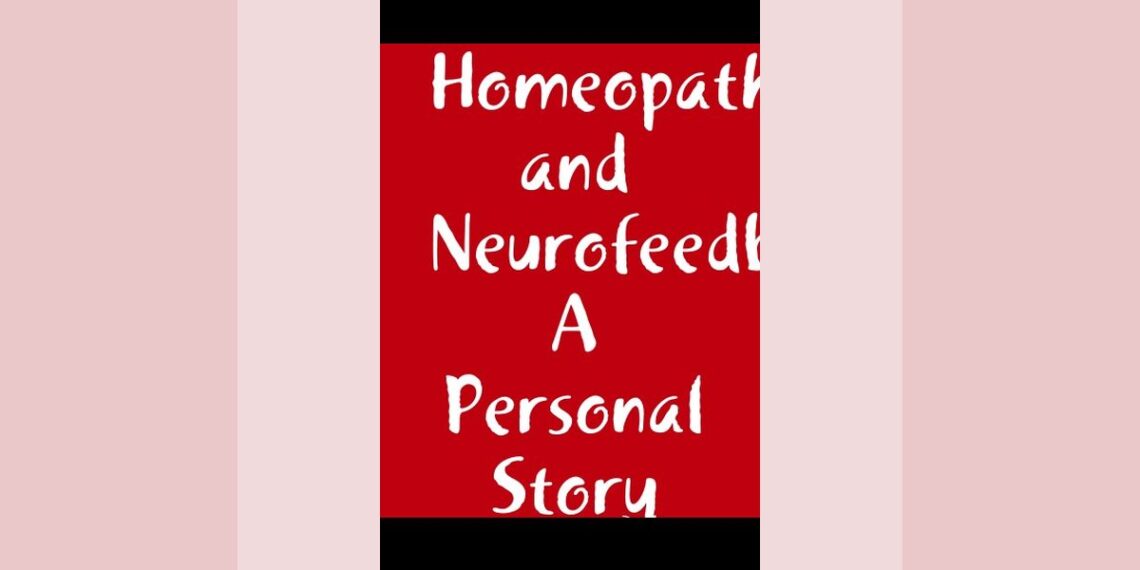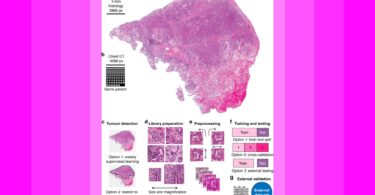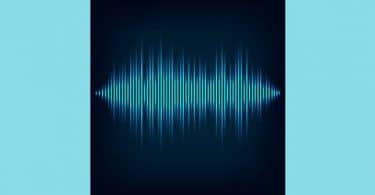Treating the autistic even with state-of-the-art homeopathy is a challenge. So, after reading Jim Robbins’ book A Symphony in the Brain: The Evolution of the New Brain Wave Biofeedback for the purpose of improving outcomes with ASD (and also ADD and ADHD) clients I decided to investigate incorporating the latest version of biofeedback into my treating modalities.
In the last twenty years neurofeedback technology has made strides from functional magnetic resonance imaging equipment, to the use of radio waves, to biofeedback of the heart and breath. Propelled by the research efforts of a small corps of scientists, real-time measurements of bodily processes have arisen that enable side-effect free, feedback treatment of epilepsy, autism, attention deficit disorder, addictions, and depression.
A 2020 Journal of Neurology and Neurobiology article, “New Advances in Electrical Neuroimaging, Brain Networks and Neurofeedback Protocols”[1] persuaded me that 1) the science was well founded; 2) properly interpreted brain wave states correlate with fear, anxiety, functional and dysfunctional thinking, therefore; 3) multiple benefits attend entraining brain wave frequencies so that fear, anxiety and distractibility are reduced and; 4) understanding of brain mapping has advanced to the point that effective training algorithms are obtainable.
Within psychiatry/psychology how common is it to see an effective treatment issue from a neurological assessment or a diagnostic instrument? Not common at all:
- There are conditions where the organic cause of a mental ailment is known but corresponding relief via treatment is hard to come by. The list includes brain trauma, stroke, hypoxia, and dementia.
- Though it sounds extreme to say so, psychiatric diagnosis and treatment are a failure. As documented in Robert Whitaker’s books (Mad In America, and Anatomy of an Epidemic) and the history disclosed in my book, Sane Asylums, The Success of Homeopathy Before Psychiatry Lost Its Mind notes, the preponderance of psychiatric diagnoses compromise a chimeric menagerie.
Its terms include psychosis, schizophrenia, and five kinds of bi-polarity. Despite pseudo-science blather from the PR arm of the pharmaceutical industry such entities are not accounted for by existing brain chemistry science. Routinely prescribed psychiatric drugs such as neuroleptics and benzodiazepines alter brain chemistry, but they do so at the cost of multiple wild-card and toxic effects.
- We also know of interventions whose benefits for mental health are unmistakable, but whose modes of action are not entirely clear. These include acupuncture, scalp acupuncture (utilizing head zones), reiki, qi gong, psychedelic drugs, shamanism, neurolinguistic programming, hypnosis and even our beloved homeopathy.
- Does there exist a diagnostic instrument whose quantitative output translates directly into clinical use? That would be neurofeedback. Another modality does not come to mind.
An abstract understanding of bio-neurofeedback did not suffice. In order to consider providing the therapy myself, I would have to personally undergo treatment. For this I chose the Advanced Bio-Neurofeedback clinic of Dr. Jolene Ross at Advanced Neurotherapy, in Needham, MA.
An extensive psychological in-take interview was held during which my history as the child of Holocaust survivors and as a toddler having been placed for at least one month in an orphanage was disclosed. I also fessed up to being an emotional hot head. Dr. Ross then scheduled a brain mapping session. This involved my being outfitted with what I called an electronic yarmulka tricked out with 20 electrode connections, each secured to my head with a bit of gel.
The technical name for the intervention is a quantitative electro encephalogram (QEEG). Its purpose is to measure, analyze, and quantify brainwaves, meaning micro-volt action potentials of the brain. Comparing my brain’s activity to that of others is step one in the assessment process.
Afterwards, captured raw EEG data (appearing as line graph squiggles) is processed through a normative database, meaning a database of brainwaves of health individuals the same age as the patient.
The experience was not unpleasant. While wearing the cap I was asked to respond to various video screen images and animations. An engaging, young technician tasked me with performing arithmetic calculations and reading passages from randomly selected book passages.
What the brainwaves would show was my state during the exercises, neither calculation accuracy nor reading comprehension mattered. All the while my technician sat by a computer monitor making sure the connections were transmitting and recording properly.
I should add here that being electronically assessed while in a relaxed as opposed to an even mildly stressed state puzzled me. As a homeopath it’s my business to know how my patients are at their “worst,” meaning basically, when they are stressed.
The behavior of a client when relaxed and presumably at their “best” denotes a state of relative balance being less relevant for homeopathic prescribing. I queried Dr. Ross as to why none of the stimuli I encountered during brain mapping were disturbing. Couldn’t upsetting stimuli be useful?
Wouldn’t they trigger me and thus prompt more accurate, dysfunction modelling? She told me no, and then offered a neurofeedback adage: “What we address are traits not states.” How odd, I thought. The contrast with homeopathy could not be more stark. Despite my skepticism the truth of the adage would before long, be borne out.
Step two involved running the squiggles in their raw form through many types of software, providing digitized filters so as to break them into their respective components and brainwave bandwidths: Delta (0-4 Hz), Theta (5-8 Hz), Alpha (9-12 Hz), low Beta (13-16 Hz), mid Beta (17-25Hz), hi Beta (26-40Hz), and Gamma (41-70Hz).
After ten days Dr. Ross’ team completed the assessment of my brain map. A session to present its findings and recommendations was scheduled. As a regular meditator who has benefited from a number of homeopathic remedies, received a fair amount of acupuncture (being an acupuncturist myself) and undergone occasional therapy, I thought my brain wave picture might not have the assessors run screaming out of the room.
It was more likely I supposed, that the report would veer in a complimentary direction. The big reveal did not show me “acing” the test. Instead, I was shocked to learn, “Your brain map shows significant developmental trauma.” This was indicated by various asymmetries and disharmonic emanations in brain regions associated with fear and anxiety. The patterns also exposed attention deficit tendencies I presumed disguised or well compensated for. Tell-tale thinking and emotional rigidities also stood exposed.
So as to reassure me I was advised that developmental trauma and disharmonized brain wave frequencies such as mine were not all that unusual. Dr. Ross was also straightforward in saying that neurofeedback would not eliminate developmental trauma. That was established early on in my life and its imprint informed my personality. What neurofeedback could do on the other hand, was decrease my anxiety, improve my focus and thinking. For this I was onboard.
The technician computer inputted my personalized algorithm. She then attached some six electrode sensors to my scalp, then booted up the program, left me alone in the room, while checking up on me occasionally as well as twice altering the electrode connections. All the while I was seated in a comfortable lounge chair with my legs elevated, viewing two video screens with the room dimly lit.
On the left screen I could and did, view movies, documentaries, old television shows, instructional videos—anything of my choosing. The screen on my right configured image fragments, broke again into puzzle parts and then reconfigured pleasant images.
These embodied river and water way themes, or on another day gorgeous natural landscapes; on yet another a panoply of birds. My assumption is that inputs through my right eye would enter and entrain the left side of the brain related frequencies. These would be expressive of logic functions such sequencing, linear thinking, mathematics, retention of facts and language mastery in need of improvement.
As my instructions were to attend not to the right, but to the left screen, only occasionally to glance at the right screen the entraining inputs had to be subconsciously received. Thus, what it was that “I” was doing during the hour-long session is a mystery. By way of heralding the conjunction of a visual configuration with a desired brain wave entrainment the right screen would occasionally beep or sound a congratulatory musical chime.
Though I was advised that I should have at least one a week, there was no limit to how many sessions within a single week (room availability allowing) I could have. My own office being a five-minute walk from the clinic, I opted for three sessions per week.
I was also advised that changes the treatment effected were less likely to hold unless a total of forty sessions were undergone! Though this sounds like a sizeable commitment the recommendation is consistent with what other neurofeedback clinics I had looked into maintained.
An unforeseen challenge of the sessions
Though no treatment could be easier I had to contend with boredom and the challenge of finding forty hours-worth of viewable Netflix or Amazon Prime videos to watch. So much garbage to click through!
Effect of the sessions
Apart from fatigue after the initial sessions, what my technicians explained reflected the brain’s being given a workout) there was little to report. Upon departing the clinic, I felt alright, also not unduly cheerful. Then gradually came realization of a difference. Something was missing. The presence of a subtle anxiety to which I had become accustomed was absent.
Possibly, no two people’s anxiety are the same. I had reported to Dr. Ross at my intake, that my anxiety partook of low-level but perpetually present notions. These included: At any moment expecting ”the other shoe to drop”; Whatever I was doing, something else was more deserving of attention; Personal criticism was actually someone’s barely restrained impulse to stab me. These ghost-like feelings had now fled the scene, leaving me difficult to provoke. Though noting the change my wife also suspected it might not last. But yes, I had become more chill.
I tell my clients that homeopathy is not a symptom eraser. Instead, homeopathy prompts remedy state excavation and revolutionary shifts of state, the peeling of an onion skin so as to allow an underlying onion skin layer to emerge. With neurofeedback a different kind of change was evident: that alteration of ingrained traits Dr. Ross had mentioned, what to my amazement—I experienced as a symptom eraser!
The hangover of developmental trauma
By way of full disclosure, homeopathy has helped me overcome issues stemming from a dire background. I credit Thuja for engendering better self-worth and enabling me to access my self-interest; Natrum Mur for dispatching entrenched grief and; Natrum Sulph for ridding me of feeling invisible. For a persistent cough rooted in lung pleural inflammation, Senega a remedy that Michal Yakir says relates to alienation was a God-send. As the child of never-fitting-in concentration camp survivors a sense “differentness” from all others was instilled from early on. For me, Senega acted to resolve both the cough and the delusion.
Nature abhors a vacuum and so it was that after the fifth or so session I began to find the emptiness of my newly gained, non-anxious state problematic. In homeopathy processing-like fashion a depressed feeling emerged to occupy the empty psychic space. Additionally, awareness grew of something else to which I had grown too accustomed to acknowledged: I was prone to visitation by waves of wistfulness. deeply melancholic and vaguely nostalgic feelings.
A range of stimuli could invite them: The espying an expanse of train track ties, the smell of kreosote (hmm, train tracks again); a glance at the canopy of trees in a wood. I chalked up the wistfulness and the depression’s profound loneliness to having as a young child been abandoned to the care of strangers in an orphanage.
Whether traits or states these appeared resistant to both homeopathy and neurofeedback for which reason something new to try was called for. A colleague referred me to a powerful hypnotherapist by the name of Nancy Canning. Over the course of a two hour long Zoom session Ms. Canning led me, step by step through a visualization and purging of my childhood abandonment trauma.
From what I know about hypno-suggestion and visualization there was nothing novel about her exercise. But her authoritative voice and fierce energy worked a kind of magic. Despite never feeling under a spell the hypnosis worked. Amazingly, I have yet to be visited either by waves of wistfulness or overpowering loneliness. Truth to tell there are times I miss the familiarity of those feelings. They represent a “comfort zone” echoing past trauma that in the big picture serves a purpose: to shape a personality that responds creatively to an often disappointing world.
Neurofeedback as an adjunct to homeopathic practice
Achieving the rarity of marrying a diagnostic instrument to a transformative treatment, neurofeedback merits a place within psychology. The capability of deciphering a complex brain map is a precious skill. Implementing its directives with an effective algorithm lends satisfaction to a practitioner’s routine.
For the motivated clinician another advantage is entry to a relatively new, therefore unregulated field. Credentialing exists but is not mandatory to the opening of a practice. That said, no one will succeed who is not adequately trained.
Even apart from merging the therapy with a homeopathy practice, drawbacks to the neurofeedback profession are apparent. The multi-modal feedback devices and requisite software for brain mapping and brain frequency entrainment can be pricey, so too the cost of being trained in brain mapping either at an existing program or via mentoring.
The initial investment can be in the thousands. So as to maintain access to the ever-growing, normative database network, membership fees must also be paid. One could offer just the feedback and outsource the brain mapping but then the most intriguing part of the work is eliminated. A large office space able to accommodate a small stable of technicians (whom one must also train) is needed along with the expertise to manage distractible, restless, seizure prone and sometimes violent children and adults.
Offering remote treatments is feasible but an option carrying its own challenges. These include renting out of delicate and expensive equipment, teaching sensor attachment as an at-home skill along with sufficient IT know how to link a client up with the monitoring office.
Last but not least there is the issue of the forty-treatment threshold posing a financial and logistical challenge to prospective clients.
Though merging neurofeedback with my own practice has its appeal I have decided doing so is not in the offing. Having a nearby, high level neurotherapy practice however, one that I could collaborate with or where clients could be referred, that would be ideal. In particular, clients seeking help for addictiveness, ASD, ADD or ADHD, seizure disorders and other conditions would stand greatly to benefit.
[1] Thatcher RW, Biver CJ, Soler EP, Lubar J, Koberda JL (2020) New Advances in Electrical Neuroimaging, Brain Networks and Neurofeedback Protocols. J Neurol Neurobiol 6(3): dx.doi.org/10.16966/2379-7150.168







Fascinating to read first-hand account of this cutting-edge therapy. Cost is likely a limiting factor, both as a client or one intending to practise it.